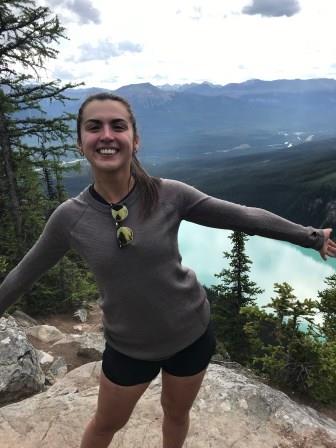Managing my VWD
Mon 13 Jan 2020
Shauna tells her story of learning to manage Type 3 VWD
This is a transcript of Shauna’s presentation at the 2019 Australian Conference.
Hi everyone, thank you all for joining me today. I’m here to tell you a little about my experiences growing up as a severe bleeder and the challenges I have faced along the way.
As a baby learning to walk, I was progressively becoming covered in bruises with no known reason why. After I fell and cut my lip, the bleeding continued until I was taken to hospital via ambulance where I was diagnosed with type 3 von Willebrand disease. With no known family history of this condition, my parents carefully navigated through my upbringing, figuring things out along the way under the guidance of my haematology team.
GROWING UP
Growing up with von Willebrand’s I’ve seen a great deal of change to my treatment plans over the years. My symptoms evolve as I age, and I have also experienced changes in my lifestyle that have required a different level of care. Keeping record of my changing symptoms helped establish new care plans, including updating contraceptive methods to manage bleeding, through to moving away from on demand treatment to a prophylactic routine to prevent ongoing joint damage.
As a child, my main causes for concern were nosebleeds, general knocks about, and weirdly enough, losing teeth. Much to the detriment of my parent’s stress levels, though to my gain, they still allowed me to try out a great deal of activities, within reason. Contact sports were out of the question, but I dabbled in athletics, running and swimming until eventually finding a love for ballet, which kept me active and strong well into my early 20s. My parents were involved in educating my teachers on my bleeding disorder and ensuring I could also advocate for myself in an emergency if needed. Treating my bleeding disorder as an open topic for conversation has ensured those around me were aware of what help I may need.
Entering my teenage years saw huge changes in my bleeding concerns, facing heavy periods and haemorrhaging ovarian cysts. Fortunately, my HTC being based in the women’s and children’s hospital meant I had access to a great women’s health team that could work closely in collaboration with my HTC. Once we found the right solution for me, I was able to get back on top of things and continue living a relatively normal life, as much as any teenager could say so! People often ask if this was difficult mentally, as most young women aren’t thrilled about discussing the topic of their hormonal activity, especially with their parents. I consider myself lucky in some ways that this was my ‘normal’, because it meant there weren’t any delays in seeking the right treatment. I also owe a great deal of thanks in that respect to my parents, who always faced the topic in an almost professional manner so that I never felt uncomfortable.
CHANGING TREATMENT PLANS
Due to a combination of the low frequency of my serious bleeding episodes as well as my families own personal choices, I grew up receiving factor on demand up until the age of 24. I had a relatively severe joint bleed in my left knee that reoccurred twice over the space of 6 months, and on investigation it was found that I had already started to develop osteoarthritis, probably from minor bleeds that went untreated over time in addition to the acute bleeding. Due to the restrictions this was already placing on my mobility I decided, with the advice of my HTC, that it was time to start a prophylactic routine to prevent any further damage to the joint.
While it is difficult to say how things might have been had I started prophylaxis earlier, I am in some ways glad that my treatment plan panned out that way. As I began treatment on my own terms, I see that this has helped with my compliance, there’s no reason to rebel against the routine. It also means that I can more easily identify what is bleeding related or just a regular injury, because I can compare scenarios and how they felt without factor.
DEALING WITH CHALLENGES

Shauna challenging herself with a trek in Canada
Photos: Shauna
In the same fashion as most of the bleeders we know, my life journey has been very unique, with treatment plans and self-management changing over time to suit my lifestyle. There is no one size fits all; however, there have been some key points in my life that have prepared me to take on most challenges.
Education: Ensuring I can learn as much as possible about my bleeding disorder in order to advocate for myself if needed. Having the confidence to ask questions and knowing where to find the answers.
Communication: being open about my bleeding disorder has helped this be a normal part of my life for me and also those around me. No bleeding topic has ever been taboo and should always be considered.
Keeping active and trying new things to find what works for me. Having the freedom to take these challenges on has helped me into adulthood and developed my confidence in all areas of life.
Overall, there are always so many exciting new advances in medicine and I know that as my journey continues to change as I get older there will be so many opportunities for me to take on whatever challenges I face head on, with a positive attitude and hope for a great future.